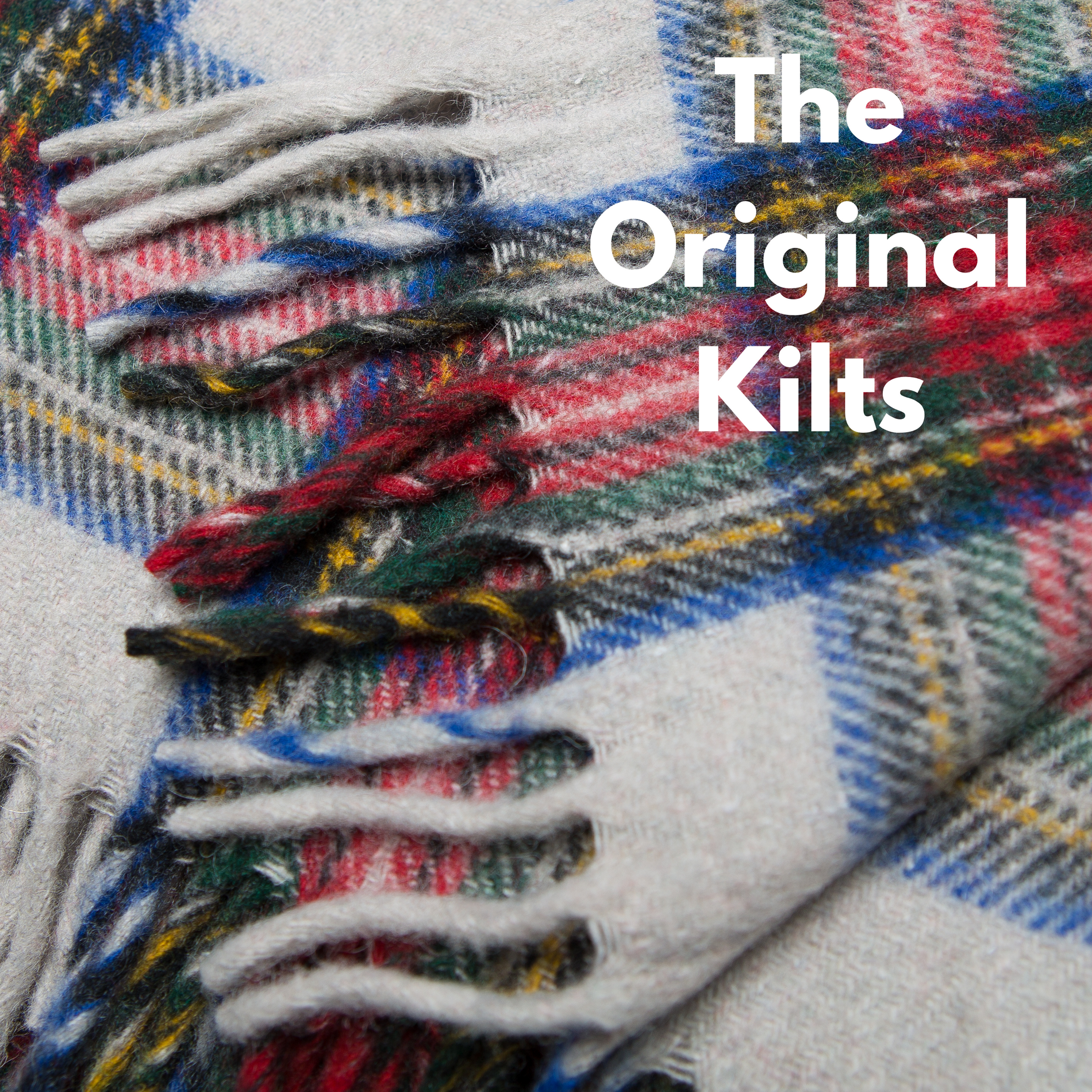The Original Kilts

The original kilts were traditional garments that originated in the Scottish Highlands and some parts of Ireland. The early forms of kilts can be traced back to the 16th century, although their exact origins and development are subject to debate among historians.
The early kilts were essentially long lengths of cloth that were gathered and belted around the waist. They were made from wool and typically woven in a tartan pattern, which consisted of horizontal and vertical stripes of different colours. Tartan patterns were specific to different clans and regions, serving as a form of identification.
These early kilts were generally draped over the shoulder and pinned with a brooch or a pin, leaving one side of the garment open. The length of the kilt varied depending on the wearer's preference, but it usually extended to the knee or slightly below.
Originally, kilts were worn by both men and women, but over time, they became predominantly associated with men's attire. They were practical for the Highland lifestyle, providing freedom of movement and protection from the harsh weather conditions in the region.
Kilts have undergone several changes and adaptations over time. Here are some notable developments and modifications in the evolution of kilts:
- Early Kilts: The early kilts, as mentioned before, were long lengths of cloth belted around the waist and draped over the shoulder. They were typically made of wool and featured tartan patterns specific to clans and regions.
- Great Kilt or Féileadh Mòr: During the 16th to 18th centuries, the Great Kilt, also known as Féileadh Mòr, emerged. It was a large piece of fabric that could be worn in multiple ways. It could be draped over the shoulder and pinned or belted at the waist, creating a pleated effect. The Great Kilt allowed for versatility and served as both a garment and a blanket.
- The Small Kilt or Feileadh Beag: In the late 17th and early 18th centuries, the Small Kilt, or Feileadh Beag, was introduced. It was a tailored version of the Great Kilt that was more fitted and easier to wear. The Small Kilt featured pleats at the back and was usually worn with a jacket or coat.
- Industrialization and Standardization: With the advent of industrialization in the 19th century, the production of kilts became more standardised. The pleats of the kilt were sewn down, making them permanent and consistent. The length of the kilt also became more standardised, typically reaching the top of the knee.
- Military Influence: Kilts gained popularity in military regiments, particularly the Scottish Highland regiments. Military kilts often incorporated additional features such as straps, buckles, and aprons.
- Modern Kilts: In the 20th and 21st centuries, modern kilts emerged as a contemporary and fashionable variation of the traditional garment. These kilts retain the basic structure and design elements of the traditional kilts but may incorporate different fabrics, colours, and patterns. Some modern kilts are made with non-traditional materials like denim or leather.
It's important to note that regional variations and personal preferences also played a role in the evolution of kilts. Different regions in Scotland and Ireland had their own unique styles and variations of kilts, contributing to the diverse range of designs we see today.
You can find some of the kilts and accesories we offer below;
Made to Order 8 Yard Wool Kilts
Made to Order Ladies Knee Length Kilt
Polyviscose Ladies Billie Kilt

 Check out our Yopto Reviews
Check out our Yopto Reviews